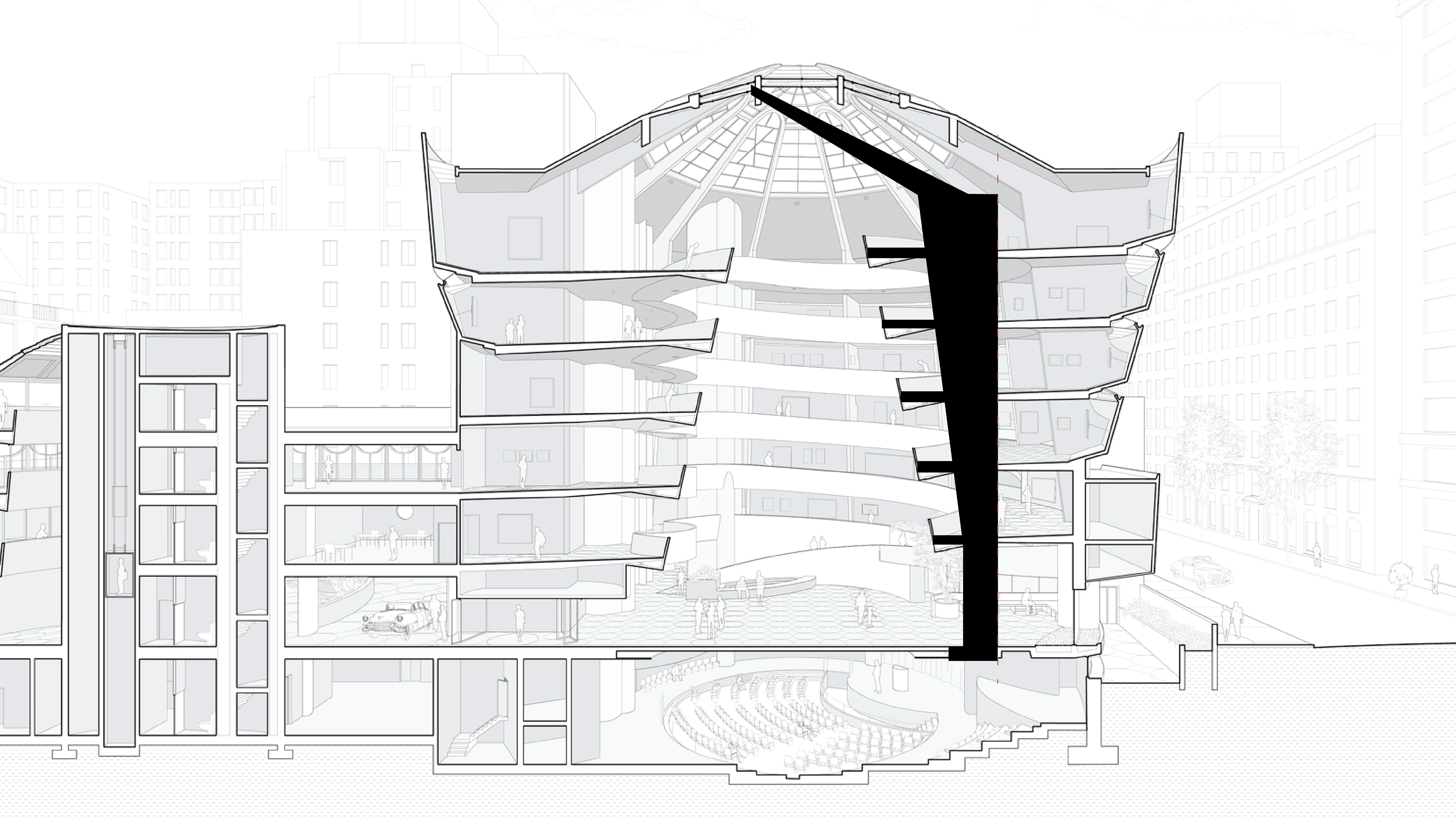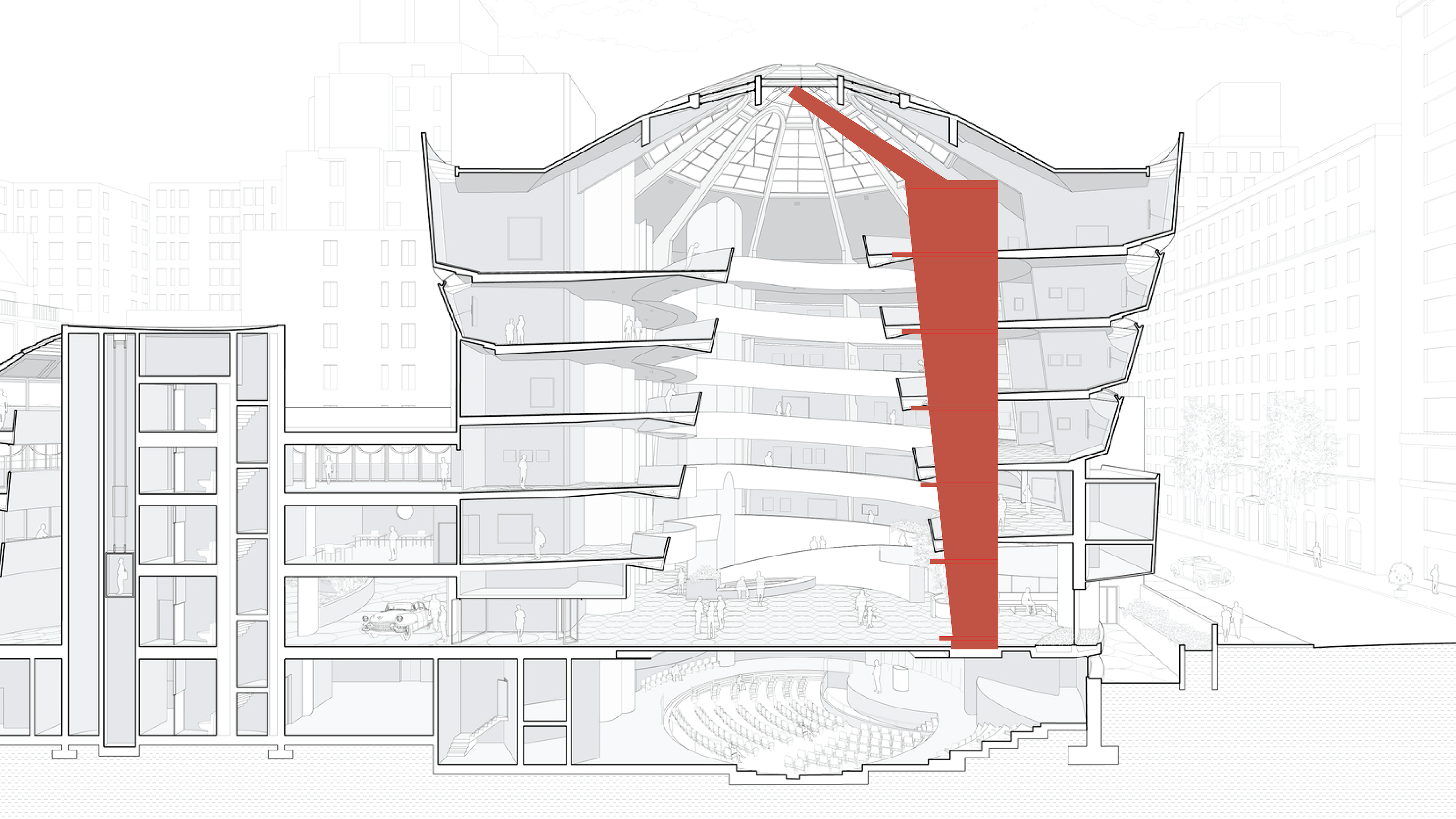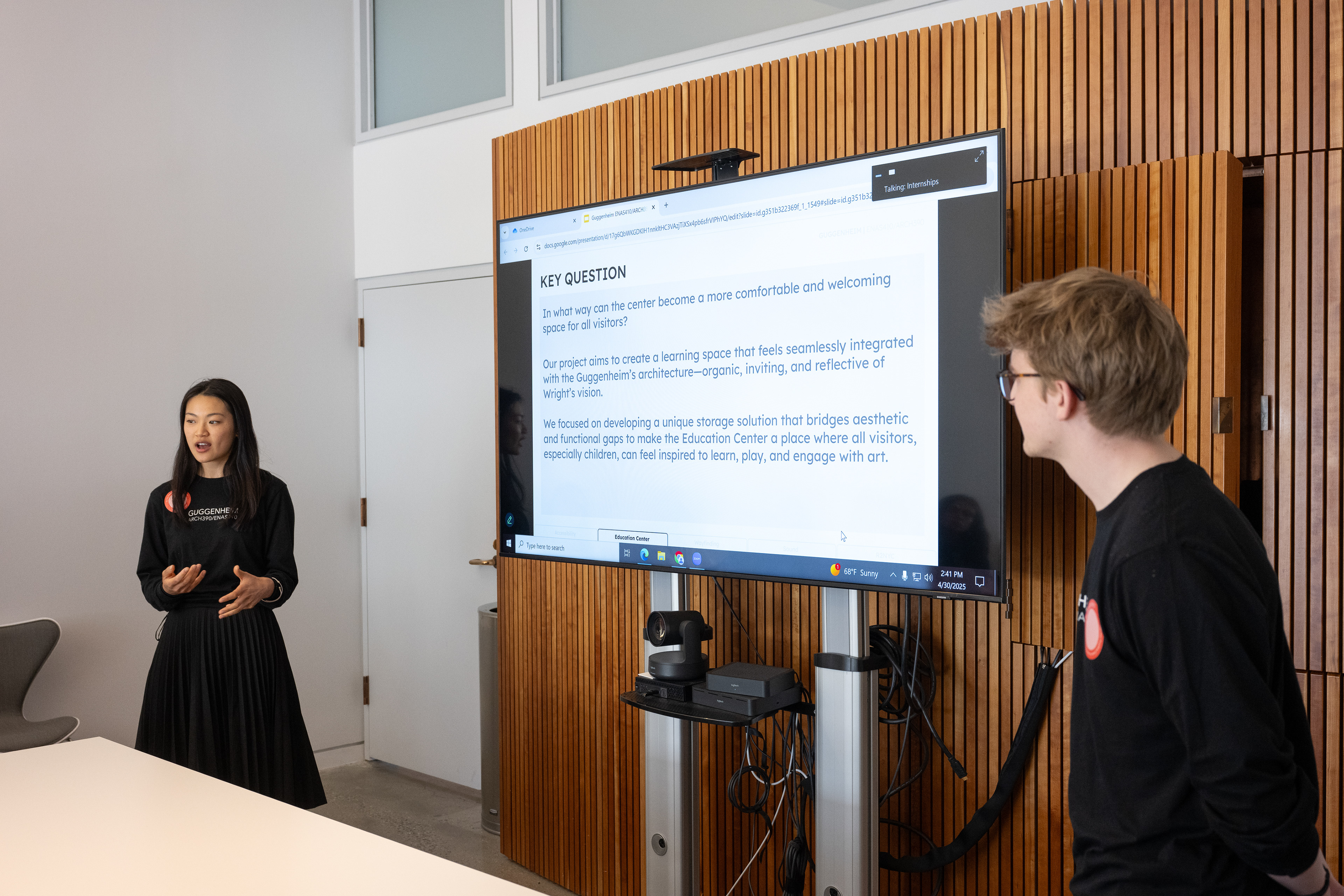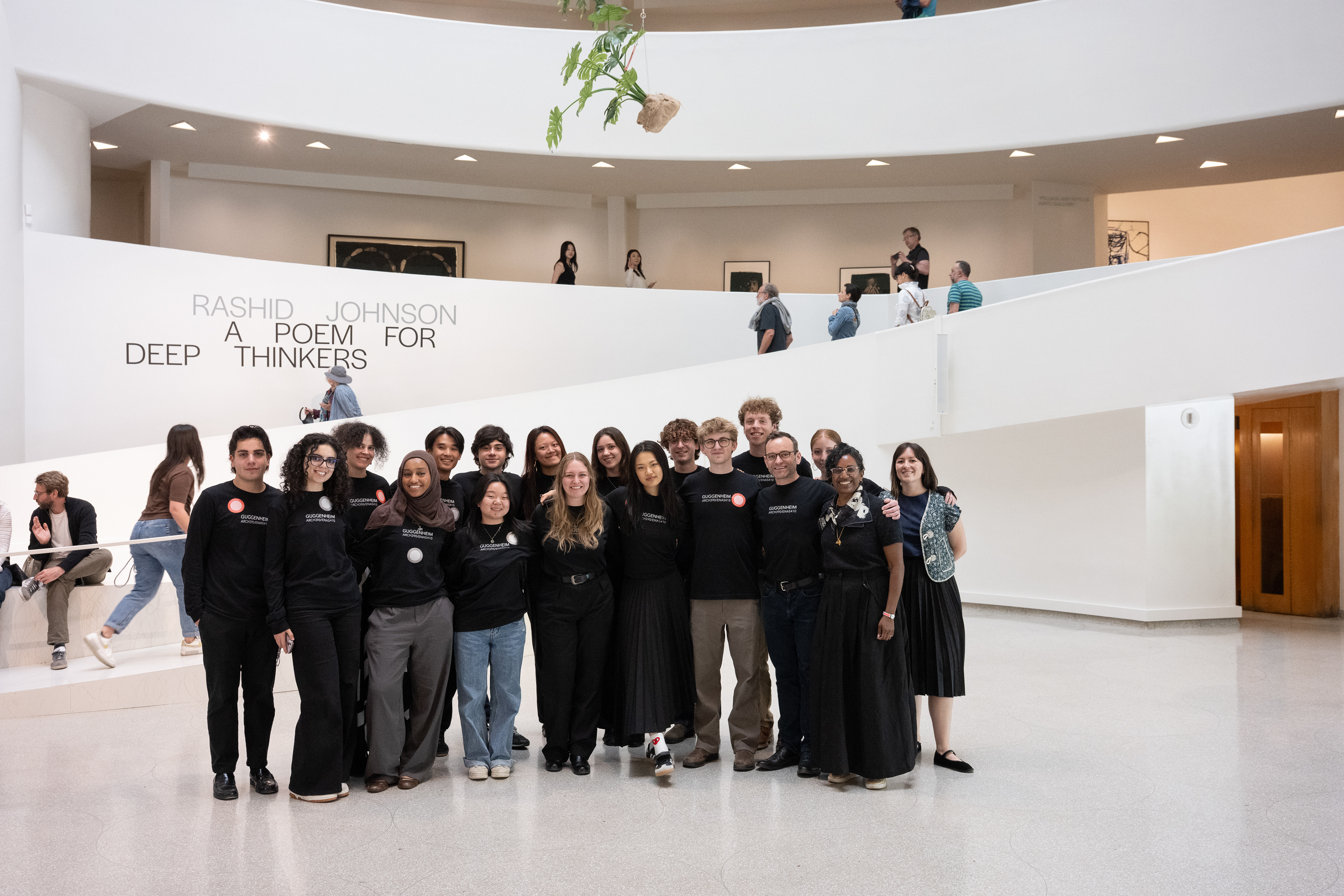Making Spaces - Engineering Course Spring 2025
GuggenShelf - Final Project
Professor Joe Zinter - Teammates Jason Nuttle B.A. Art and Mechanical Engineering ' 25, Brandon Lin B.S. Mechanical Engineering '26
Our project reimagines the Guggenheim Museum’s Education Center to better reflect the architectural spirit of the museum and support its educational mission.
The Education Center hosts a wide range of programs, from children's camps to teen and family workshops. A frustration frequently expressed by visitors is that the Education Center currently feels disconnected—both visually and spatially—from the iconic organic architecture of the main Guggenheim building . Through thoughtful design interventions, we aim to transform this space into one that is not only more functional, but alludes back to Frank Lloyd Wright's original architecture and vision.

At the heart of our proposal is a custom-designed shelving system: The GuggenShelf. This intervention addresses two major challenges—organization and aesthetic disconnection. Inspired by the museum’s cross section, we abstracted the six levels of Wright’s interior ramp into a single flowing form. To make this usable for storage, we standardized the height differences between the ramps to fit conventional shelf dimensions—allowing the piece to retain the feeling of the original architecture while serving a practical purpose.







This project also provided us many opportunities to learn through fabrication. In keeping with the seamless, integrated nature of the Guggenheim’s architecture, we avoided visible hardware. The shelf was designed to slot together using interlocking joints, requiring precise angles for assembly. All pieces were CNC-routed at the Yale Mill Workshop, and we spent many hours sanding and grinding the parts by hand. The process of building such a large structure made us appreciate the minute details such as the ramps, web walls, and oculus of the Guggenheim even more.
By integrating form, function, and fabrication into a single gesture, we have created a piece that invites curiosity, reflects Wright’s legacy, and supports the everyday needs of a vibrant educational program. The Education Center becomes not just a classroom, but a continuation of the museum’s living, breathing design.